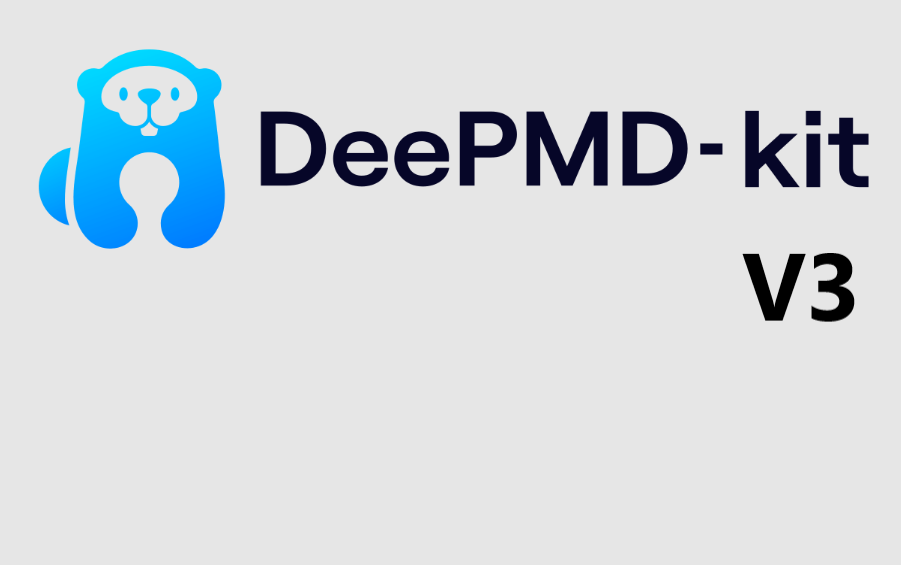
July 09, 2025
DeePMD-kit v3: Cross-Framework Machine Learning Potentials for Scientific Computing
DeePMD-kit v3: Cross-Framework Machine Learning Potentials for Scientific Computing
Have you thought about how researchers imitate atomic-level molecular behavior? They predict molecular interactions for drug discovery and material design. How? The solution is molecular dynamics simulations, and I am intrigued to find out how DeePMD-kit v3's machine learning-driven potential is changing this process. Today's this article is for scientists, researchers, and anybody interested in machine learning and molecular dynamics. You will learn how to build up and execute simulations using DeePMD-kit v3, one of the best tools.
What is DeePMD-kit v3?
DeePMD-kit v3; what is it? Imagine integrating machine learning with molecular dynamics. DeePMD-kit v3 provides a solid foundation for high-fidelity molecular simulations. To model molecular systems with high accuracy and low processing cost, it uses deep learning potentials.
Even more interesting, DeePMD-kit v3 supports TensorFlow, PyTorch, JAX, and PaddlePaddle deep learning backends. You may select the one that matches your project, whether you are using TensorFlow or PyTorch's flexibility. DeePMD-kit lets researchers mimic complicated molecular interactions with unprecedented accuracy, opening to new discoveries.
Setting Up DeePMD-kit v3
Ready to start? Let me help you set up DeePMD-kit v3 for molecular simulations. Install the requirements first. Do not worry; it is simple. Installing TensorFlow's packages requires just a few commands:
pip install deepsmd tensorflow
Next, we need a molecular simulation environment. DeePMD-kit simplifies molecular structure loading with basic functionalities. A brief look at loading a molecule and setting up a simple DeePMD model:
import tensorflow as tf
from deepsmd import DeePMDModel
# Load or create molecular configuration
molecule = load_molecule("path/to/structure_file.xyz")
# Initialize DeePMD model
model = DeePMDModel()
model.load_weights("path/to/weights")After that, the model has a molecular arrangement and is ready for training!
Building and Training a Molecular Dynamics Model
After setting up our environment, we can develop a model. We need a dataset to train the model. Best datasets are usually based on high-level quantum mechanical computations like DFT findings, however DeePMD-kit can accept other data sources. Once your data is available, we may begin training.
How to load the dataset into DeePMD-kit and start training:
from deepsmd import load_data
# Load the training data
train_data = load_data("path/to/training_data")
With the data, we can construct and train our model:
model.compile(optimizer=tf.keras.optimizers.Adam(learning_rate=0.001),
loss='mean_squared_error')
# Train the model
model.fit(train_data, epochs=100, batch_size=32)Using data, a model learns to predict molecular behavior. More data improves molecular force and energy predictions in the model. Build a molecular expert one dataset at a time!
Advanced: Customizing Training Parameters
Want more training control? To optimize performance, DeePMD-kit lets you adjust hyperparameters. You may alter the optimizer, learning rate, or loss function. Create a custom training loop using this example:
from tensorflow.keras.callbacks import EarlyStopping
# Define a custom callback for early stopping
early_stopping = EarlyStopping(monitor='val_loss', patience=5)
# Compile the model with custom hyperparameters
model.compile(optimizer=tf.keras.optimizers.Adam(learning_rate=0.0005),
loss='mean_absolute_error')
# Start training with custom parameters and early stopping
model.fit(train_data, epochs=200, batch_size=64, validation_split=0.2, callbacks=[early_stopping])This setup prevents overfitting and shortens model training, saving time and computing resources.
Running Molecular Dynamics Simulations
After training our model, what do we do? The fun starts here. DeePMD-kit predicts molecule forces and energy and does comprehensive molecular dynamics simulations. These simulations allow you to study molecular behaviour over time, which is helpful for drug design and material research.
Here's how to get started with a basic simulation:
# Simulate dynamics using the trained model
forces = model.predict_forces(molecule)
energies = model.predict_energies(molecule)All done! You may now use LAMMPS to develop the system and examine molecule interactions using DeePMD-kit. You can now simulate real-world scenarios on a scale and accuracy previously used by supercomputers.
Visualizing Simulation Results
DeePMD-kit is cool since it predicts molecular behavior and describes and visualizes the findings. Visualization is crucial for interpreting complicated molecular dynamics simulation results. Let's use Matplotlib to illustrate energy and force predictions:
import matplotlib.pyplot as plt
# Plotting the energies over time
plt.plot(energies)
plt.title("Energy vs Time")
plt.xlabel("Time (fs)")
plt.ylabel("Energy (eV)")
plt.show()
# Plotting the forces on atoms
plt.plot(forces)
plt.title("Forces on Atoms vs Time")
plt.xlabel("Time (fs)")
plt.ylabel("Force (eV/Ã…)")
plt.show()A simple representation portrays how energy and forces change throughout the simulation. These plots can let you rapidly evaluate molecular simulations as you modify your models.
Conclusion
That is it! DeePMD-kit v3 transforms molecular dynamics simulations. It uses deep learning and scientific computing to model chemical processes more precisely and efficiently. It supports TensorFlow, PyTorch, JAX, and PaddlePaddle, allowing you to smoothly incorporate it into your workflow.
DeePMD-kit v3 lets you push molecular simulation limits while investigating materials, pharmaceuticals, or how molecules interact. Ready to start? A dataset, trained model, and DeePMD-kit is strong skills are enough.
814 views
